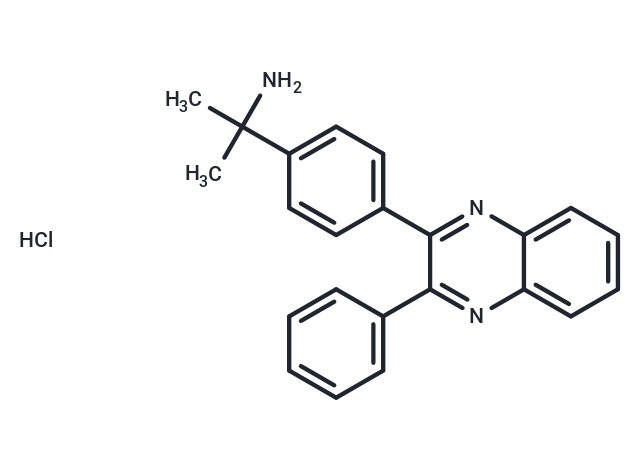Shopping Cart
- Remove All
 Your shopping cart is currently empty
Your shopping cart is currently empty

Akt-I-1,2 is a selective inhibitor of Akt1 and Akt2.

| Pack Size | Price | Availability | Quantity |
|---|---|---|---|
| 1 mg | $139 | In Stock | |
| 2 mg | $189 | In Stock | |
| 5 mg | $283 | In Stock | |
| 10 mg | $416 | In Stock | |
| 25 mg | $648 | In Stock | |
| 50 mg | $876 | In Stock | |
| 100 mg | $1,180 | In Stock | |
| 200 mg | $1,590 | In Stock |
| Description | Akt-I-1,2 is a selective inhibitor of Akt1 and Akt2. |
| Molecular Weight | 375.89 |
| Formula | C23H22ClN3 |
| Cas No. | 473382-50-2 |
| Smiles | Cl.CC(C)(N)c1ccc(cc1)-c1nc2ccccc2nc1-c1ccccc1 |
| Relative Density. | no data available |
| Storage | Powder: -20°C for 3 years | In solvent: -80°C for 1 year | Shipping with blue ice. | ||||||||||||||||||||
| Solubility Information | DMSO: 5 mg/mL (13.3 mM), Sonication is recommended. | ||||||||||||||||||||
Solution Preparation Table | |||||||||||||||||||||
DMSO
| |||||||||||||||||||||

Copyright © 2015-2025 TargetMol Chemicals Inc. All Rights Reserved.